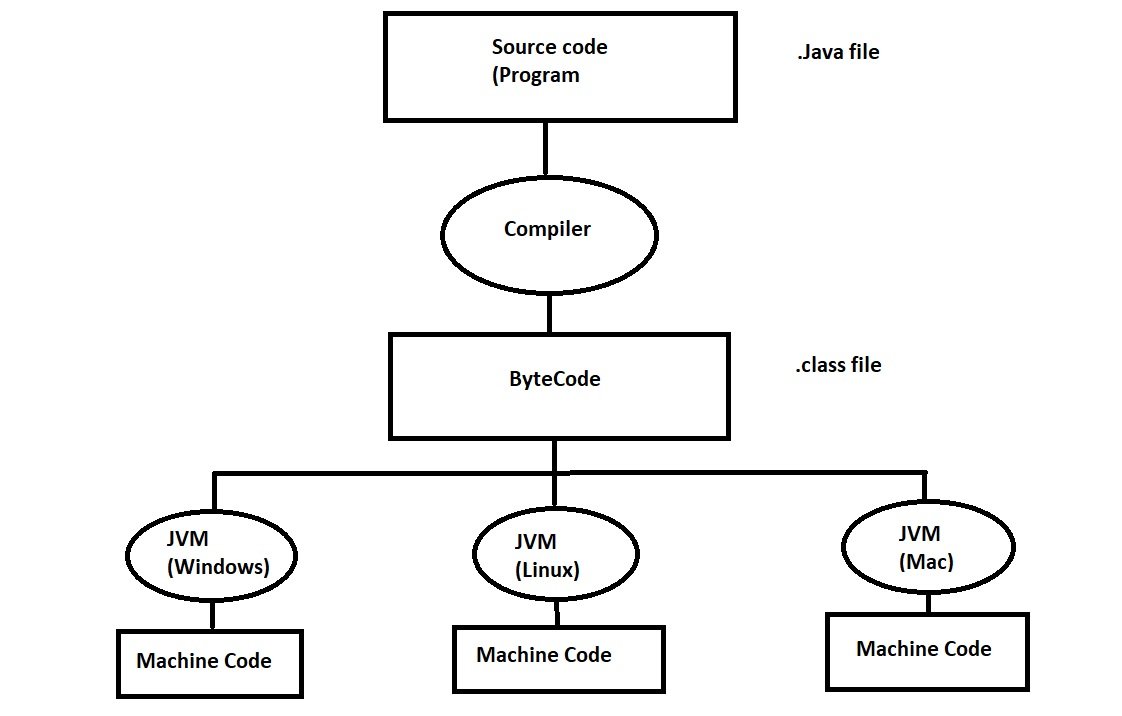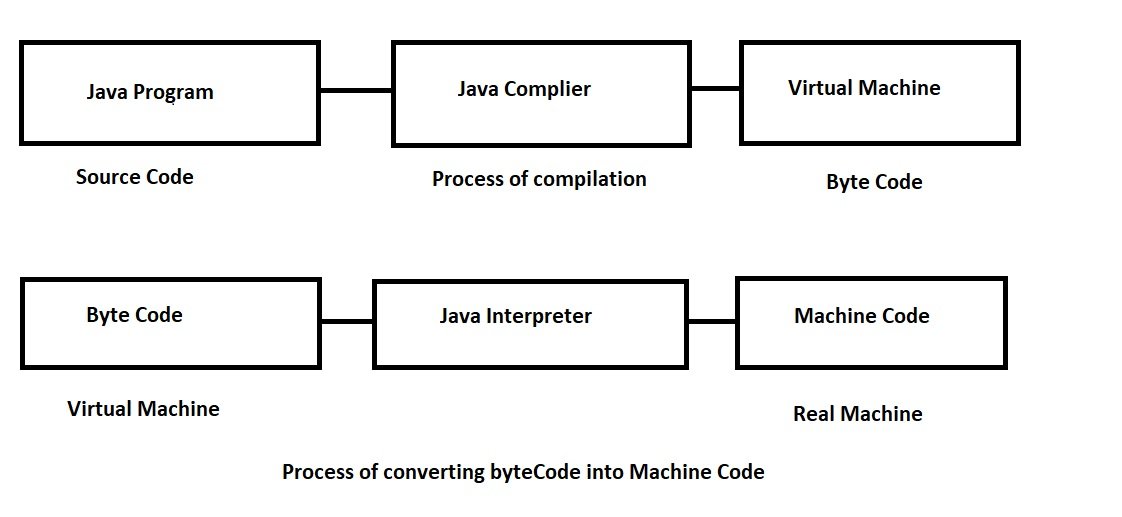History of Java language. Byte Code, Internet and Java.
- Java is an object-oriented programming language developed by “Sun micro-system” In 1991. Originally called “oak” by james gosling, one at the inventors of the language. Java was conceived by James gosling, Patrick naughton, chris warth. Ed franks and Mike sheridan at sun Micro in 1971.
- Firstly it was called “Greentalk” by james gosling and the file extension was “.gt”.After that, it was called Oak and was developed as a part of the Green project. later “oak” was renamed “Java: because it was already a trademark by Oak Technologies. in 1995 it was first released for public use.
- Java was designed for the development of software for consumer electronic devices like TV, Vcr, toasters and such other electronic machines.
- The goal had a strong impact on the development team to make the language simple, portable and highly reliable.
- The java software was released as a development kit. The 1st 2 version were named JDK 1.0.8 & JDK 1.1
- In 1998, while releasing the first version Sun Microsystems changed the name from Java development kit (JDK) to Software development kit (SDK) with every version, Java become stronger and stronger.
History Of Java
- In 1990, Sun Microsystem has create a project to develop software for consumer electronic devices that could controlled by a remote. This project was called stealth project but later it have changed to green project.
- In 1991, After using the most popular OOL c++, The team announced a new language named “oak”.
- In 1993, The (www) appeared on the internet & transformed the text-based internet into a graphical-rich environment. The green project team came up with the idea of developing web applet’s (Tiny programs) using the new language that could run on all types of computers that connected to internet.
- In 1994, The team developed a web browser called ‘Hot Java’ to locate & run tiny programs on internet. It was the first browser having the capabilities of running applets.
- In 1995, Oak was renamed “Java” due to some legal issues. Java is just a name & is not an acronym. many popular companies including Netscape and Microsoft announced their support to Java.
- In 1996, Java established itself not only as a leader for internet programming but also as a general purpose.
- In 1997, Sun Microsystem releases Java development kit 1.1 (JDK 1.1).
- In 1998, Sun Microsystem releases the java 2 with version 1.2 of the software development kit (SDK 1.2)
- In 1999, Sun Microsystem releases java 2 platform, Standard edition (J2SE) & Enterprises edition (J2EE)
- In 2000, J2SE with SDK 1.3 was released.
- In 2002, J2SE with SDK 1.4 was released.
- In 2004, J2SE with JDK 5.0 (instead of 1.5) was released. This is know as J2SE 5.0.
Since those early days, Java has matured into an industrial strength, with different editions for desktop, server and portable/ embedded device development and a huge number of application programming interfaces (API) for different kinds of Applications.
Since Oracle’s take over of sun microsystem in 2010, Java has become an oracle technology. But it is still free to use and is available as an open source project.
The most striking features of language is that it is a platform neutral language.
What is JAVA BYTE-CODE?
Java bytecode is the instruction set for the Java Virtual Machine(JVM). It acts similar to an assembler which is an alias representation of a C++ code. As soon as a java program is compiled, java bytecode is generated. In more apt terms, java bytecode is the machine code in the form of a .class file. With the help of java bytecode we achieve platform independence in java.
How does it works?
When we write a program in Java, firstly, the compiler compiles that program and a bytecode is generated for that piece of code. When we wish to run this .class file on any other platform, we can do so. After the first compilation, the bytecode generated is now run by the Java Virtual Machine and not the processor in consideration. This essentially means that we only need to have basic java installation on any platforms that we want to run our code on. Resources required to run the bytecode are made available by the Java Virtual Machine(JVM), which calls the processor to allocate the required resources. Java virtual machine’s are stack-based so they stack implementation to read the codes.

In the case of java, It is the magic of bytecode that makes it platform independent. This adds to an important feature in the Java language termed as portability.
Every system Has its own JVM which gets installed automatically when the JDK software in installed.

Java And Internet
- Java is strongly associated with the internet because of the fact that the 1st application program written in java was Hot Java- a web browser to run applets on internet.
- Internet users can use java to create applet programs And run them locally using a “Java-enabled browser” Such as Hot Java.
- They can also use a java enabled browser to download an applet located on a computer anywhere in the internet And run it on his local computer. Infact, Java applets have made the internet a true extension of the strong system of the local computer.
- Internet users can also set up their web sites containing java applets that could be used by other remote users of internet. The ability of java applets to hitch a ride on the information superhighway has made java a unique programming language. For the internet. In fact, due to this java is popularly known as internet Language.
Visit website for more post!
How to Fix indexed problem in Google search console: Coverage issue, Sitemap Problem
Visit our Site for more post:- www.bootpoot.tech
You might Like:
WHAT IS ARTIFICIAL INTELLIGENCE? CHARACTERISTICS, APPLICATIONS AND IMPORTANCE OF A.I.
ADVANTAGES AND DISADVANTAGES OF JAVA


oij